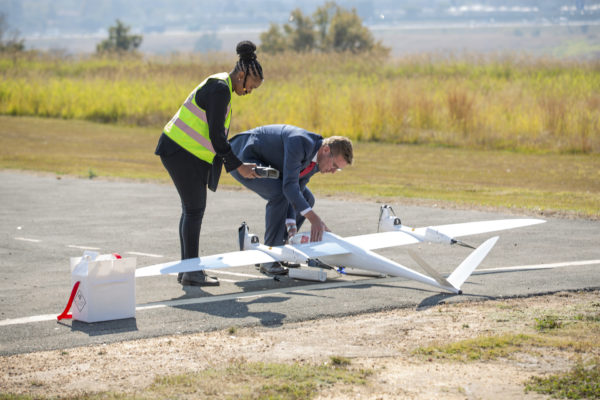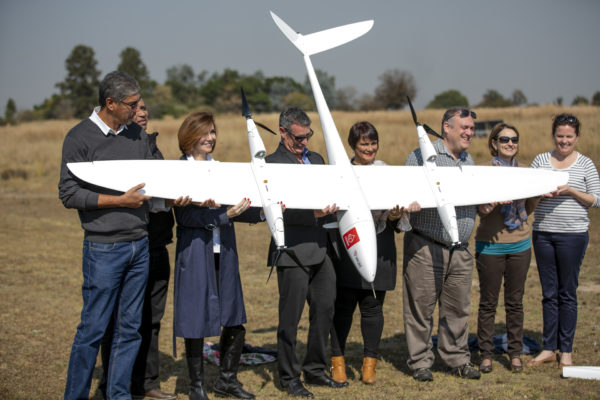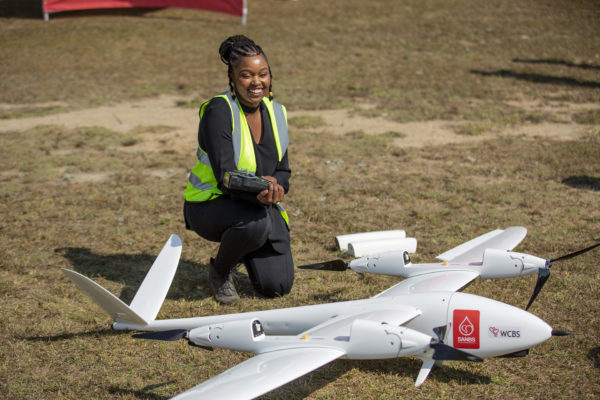Delivering blood to those in need just got seriously high-tech, thanks to the brand new drone blood delivery service launched by the South African National Blood Service (SANBS).
The blood service’s new “Tron drone” features a wing design suited for maximum efficiency that allows for long periods of travel while using minimal power.
The delivery drone has a range of over 100km and can travel at speeds of up to 180km per hour, but can also travel at a steady 60km per hour when needed.

“We believe that this is an innovative step in the history of blood transfusion. SANBS is determined to improve rapid access to life-saving blood products in rural areas through the use of drone technology. Our concept is globally unique in that we will provide two-way logistics; patients can receive emergency “O negative” blood from one of our blood banks via drone. The same drone can then take that patient’s blood sample to the blood bank for comprehensive cross-matching and then safely and rapidly deliver compatible blood back to the patient,” says SANBS CEO Dr Jonathan Louw.
Louw said that when designing the drone, there were seven criteria taken into consideration.

Firstly they focused on the speed as the drone would need to be fast to ensure patients in need received blood as soon as possible. Another consideration was not only transporting blood to patients but also having the ability to bring a sample of the patient’s blood to its centre so a perfect match could be found.
The drone would also need to be durable and unaffected by G-force or temperatures that would affect the integrity of the blood it would be carrying. Safety was also a main concern; the drone would need to be able to glide to the ground easily as well as deploy a parachute in emergency situations. The drone was also designed to be able to carry at least four units of blood or 2kg. Lastly the new transport medium needed to be able to fly long distances to get to rural areas as well as be an affordable service.
Luckily for locals or those in need, the new service allows blood to be transported for a minimal fee of R10, far cheaper than the original fee needed to transport blood via helicopter.

After a six-month process, the SANBS decided to partner with the organisation they deemed to be the best option to make the drone delivery service a reality: Quantum Systems.
This new service will allow SANBS to go above and beyond their current capacity.
“We believe this will be a milestone in the history of blood transfusion, not only in South Africa, but in the entire world.”
The SANBS will conduct a series of test runs, and once the Civil Aviation Authority gives them the necessary licensing, they’ll look to expand into multiple provinces including KZN, the Western Cape and the Eastern Cape.

How does the Tron drone work?
The Tron drone can be controlled by an on-the-ground pilot. Before the drone takes off, a series of security checks are conducted to ensure it is ready for a safe flight.
Once the checks are complete the drone can take off and will fly at a height that does not interfere with air traffic.
A HD-quality video is relayed to the control centre from the drone during flight. This way, pilots can ensure it is on the correct path and can easily monitor it at all times.
The Tron drone is able to land smoothly and avoid damage to either itself or the sample it carries, making it the perfect transport medium even in the case of emergencies.
Picture: South African National Blood Service






